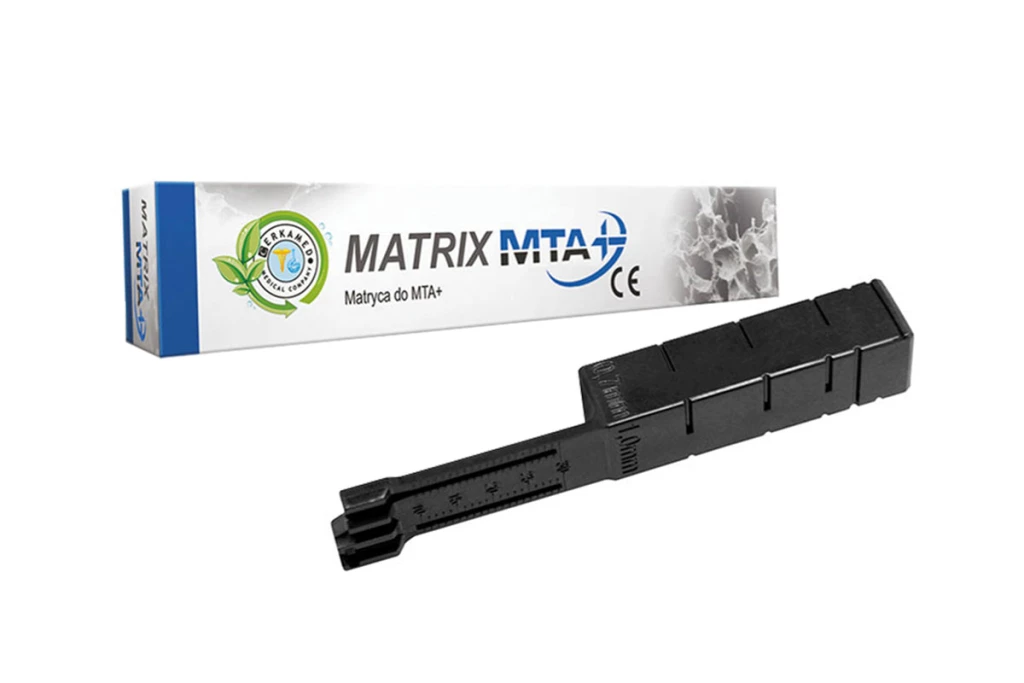

MTA Block
Sold out
The item you're interested in is currently out of stock. Explore our catalog for a wide range of similar products
Sold out
The item you're interested in is currently out of stock. Explore our catalog for a wide range of similar products
Description
Common characteristics
MTA (Mineral Trioxide Aggregate) is a widely used material in dentistry, particularly in endodontics and restorative procedures. Understanding the common characteristics of MTA blocks can help dental professionals make informed decisions regarding their use in various clinical applications.
Physical Properties
MTA blocks exhibit several key physical properties that contribute to their effectiveness:
- Color: MTA is typically gray or white, with the white variant being preferred for aesthetic purposes in anterior teeth.
- Consistency: When mixed, MTA has a thick paste-like consistency that allows for easy placement and manipulation during procedures.
- Setting Time: MTA has a relatively long setting time, which can vary from 30 minutes to several hours, depending on the formulation and environmental conditions.
Chemical Composition
The chemical composition of MTA plays a crucial role in its properties:
- Calcium Silicate: The primary component, providing the material with its bioactive properties.
- Calcium Sulfate: This component aids in the setting process and enhances the material's strength.
- Bismuth Oxide: Added for radiopacity, allowing for easy visualization on radiographs.
Biocompatibility
MTA is known for its excellent biocompatibility, which is essential for dental materials:
- Osteoconductivity: MTA promotes the formation of new bone and dentin, making it suitable for use in vital pulp therapy and apical surgery.
- Minimal Inflammation: The material elicits a low inflammatory response, reducing the risk of complications post-treatment.
Mechanical Properties
The mechanical characteristics of MTA blocks are vital for their performance:
- Compressive Strength: MTA exhibits high compressive strength, making it durable under occlusal forces.
- Tensile Strength: While MTA has lower tensile strength compared to other materials, it is still adequate for most clinical applications.
Clinical Applications
MTA blocks are versatile and can be used in various dental procedures:
- Pulp Capping: MTA is commonly used for direct and indirect pulp capping due to its bioactive properties.
- Apexification: It is effective in creating a barrier in non-vital teeth with open apices.
- Root-End Filling: MTA is often used as a root-end filling material in apicoectomy procedures.
Handling and Storage
Proper handling and storage of MTA blocks are essential for maintaining their properties:
- Mixing: MTA should be mixed according to the manufacturer's instructions to achieve optimal consistency and performance.
- Storage Conditions: MTA should be stored in a cool, dry place to prevent premature setting and contamination.
Indications for the use in dentistry
MTA (Mineral Trioxide Aggregate) has become a cornerstone material in modern dentistry, particularly in endodontics and restorative procedures. Its unique properties make it suitable for various clinical situations. Below are the primary indications for the use of MTA blocks in dentistry.
1. Pulp Capping
MTA is widely used for direct and indirect pulp capping due to its biocompatibility and ability to promote dentin regeneration. It serves as a protective barrier for the pulp tissue, allowing for healing and repair.
Direct Pulp Capping
- Indications: When the pulp is exposed due to caries or trauma.
- Benefits: Promotes pulp healing and maintains vitality.
Indirect Pulp Capping
- Indications: When the pulp is not exposed but is at risk due to deep caries.
- Benefits: Protects the pulp while allowing for continued dentin formation.
2. Apexification
MTA is an excellent choice for apexification procedures in immature teeth with necrotic pulp. It helps in the formation of a calcified barrier at the apex, allowing for successful root canal treatment.
Indications for Apexification
- Immature teeth: Teeth with open apices that have undergone pulp necrosis.
- Benefits: Facilitates root development and strengthens the tooth structure.
3. Root-End Filling
MTA is commonly used as a root-end filling material in apicoectomy procedures. Its sealing ability and biocompatibility make it ideal for preventing reinfection.
Indications for Root-End Filling
- Apicoectomy: Surgical removal of the root tip due to persistent infection.
- Benefits: Provides a hermetic seal and promotes healing of the periapical tissue.
4. Perforation Repair
MTA is effective in repairing root perforations that may occur during endodontic treatment. Its sealing properties help prevent bacterial contamination and promote healing.
Indications for Perforation Repair
- Root perforations: Accidental perforations during canal preparation.
- Benefits: Seals the perforation site and supports tissue regeneration.
5. Treatment of Internal Resorption
MTA can be used to treat internal resorption by sealing the resorptive defect and promoting healing of the surrounding tissues.
Indications for Internal Resorption Treatment
- Internal resorption: Resorption of dentin from within the tooth structure.
- Benefits: Helps in maintaining tooth integrity and preventing further resorption.
6. Management of Traumatic Dental Injuries
MTA is beneficial in the management of traumatic dental injuries, particularly in cases of pulp exposure or root fractures.
Indications for Traumatic Dental Injuries
- Pulp exposure: Resulting from trauma.
- Root fractures: Where pulp vitality needs to be preserved.
- Benefits: Facilitates healing and maintains tooth vitality.
7. Use in Pediatric Dentistry
MTA is particularly useful in pediatric dentistry due to its favorable properties for treating young patients.
Indications in Pediatric Dentistry
- Pulp therapy: In primary teeth with pulp exposure.
- Benefits: Promotes healing and is safe for developing teeth.
In summary, MTA blocks are versatile materials with a wide range of applications in dentistry. Their unique properties make them indispensable in various clinical scenarios, ensuring successful outcomes for both practitioners and patients.
Benefits of using in dental practice
Mineral Trioxide Aggregate (MTA) has gained significant recognition in the field of dentistry, particularly for its versatile applications in endodontics and restorative procedures. The use of MTA blocks in dental practice offers numerous advantages that enhance treatment outcomes and patient satisfaction.
1. Biocompatibility
One of the most significant benefits of MTA is its excellent biocompatibility. MTA is made from natural minerals, which means it is well-tolerated by the body. This property minimizes the risk of adverse reactions, making it an ideal choice for various dental applications, including pulp capping and root-end fillings.
2. Sealing Ability
MTA blocks provide superior sealing properties compared to traditional materials. This is crucial in preventing microleakage, which can lead to treatment failure. The hermetic seal created by MTA helps to protect the pulp and surrounding tissues from bacterial contamination.
3. Antimicrobial Properties
MTA exhibits inherent antimicrobial properties that help inhibit the growth of bacteria. This is particularly beneficial in endodontic treatments, where the risk of infection is a primary concern. By using MTA blocks, dental practitioners can enhance the success rate of root canal treatments.
4. Promotes Healing
The use of MTA blocks has been shown to promote healing in dental tissues. The material encourages the formation of a mineralized tissue barrier, which is essential for the regeneration of the pulp and surrounding structures. This regenerative capability is particularly advantageous in vital pulp therapies.
5. Versatility
MTA blocks can be utilized in various dental procedures, including:
- Pulp capping
- Root-end fillings
- Repair of root perforations
- Apicoectomy procedures
This versatility makes MTA a valuable addition to any dental practice, allowing practitioners to address a wide range of clinical situations effectively.
6. Radiopacity
MTA blocks possess excellent radiopacity, which allows for easy visualization on radiographs. This property aids in the assessment of the treatment's success and helps in monitoring the healing process over time.
7. Ease of Use
MTA blocks are user-friendly and can be easily manipulated during procedures. Their consistency allows for straightforward placement, ensuring that dental professionals can achieve optimal results with minimal effort.
8. Long-term Success
Studies have shown that treatments involving MTA blocks have a high success rate over the long term. This reliability makes MTA a preferred choice for dental practitioners aiming to provide the best care for their patients.
Incorporating MTA blocks into dental practice not only enhances treatment efficacy but also contributes to improved patient outcomes. The numerous benefits of MTA make it an indispensable material in modern dentistry.
Sold out
The item you're interested in is currently out of stock. Explore our catalog for a wide range of similar products